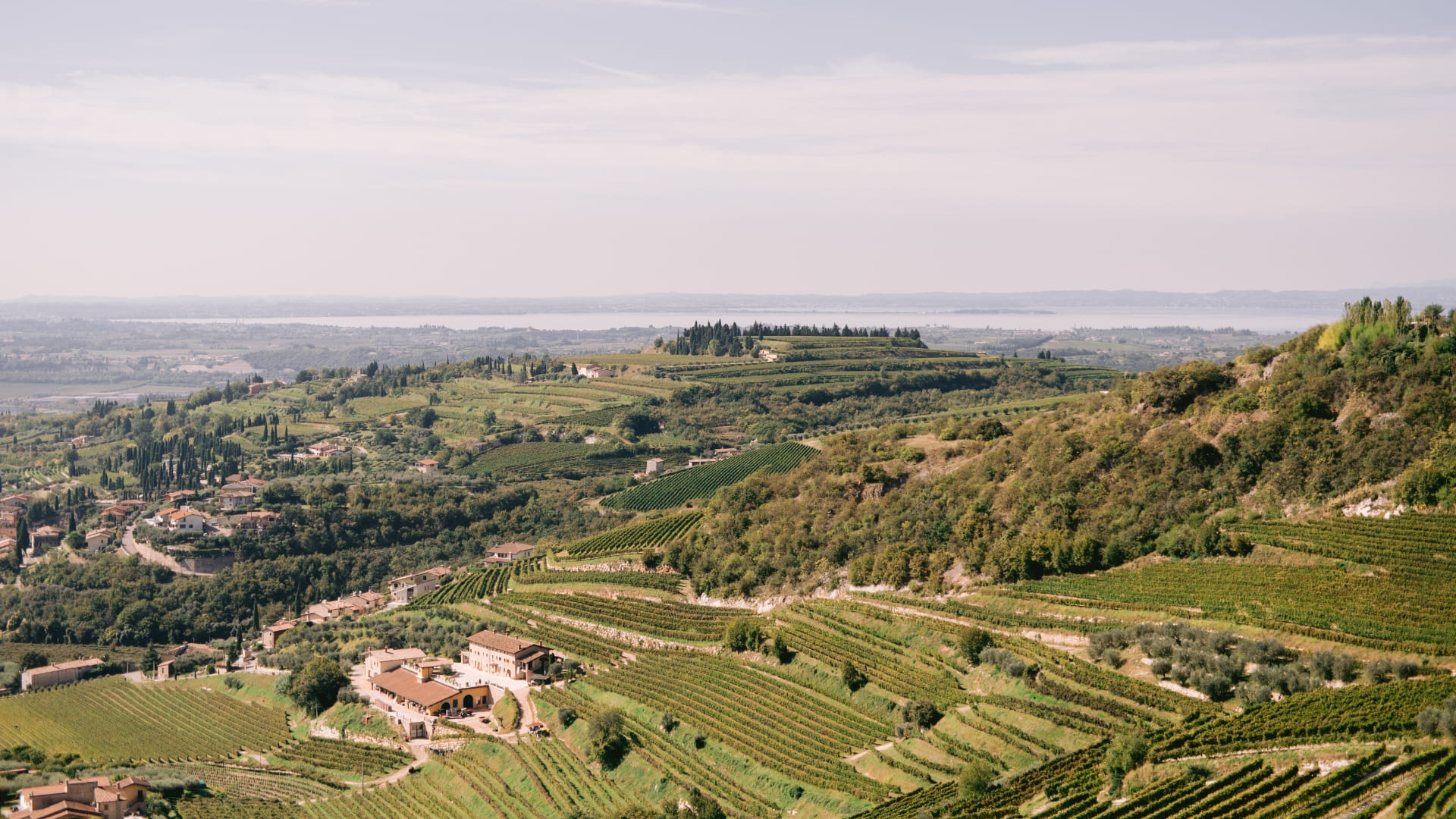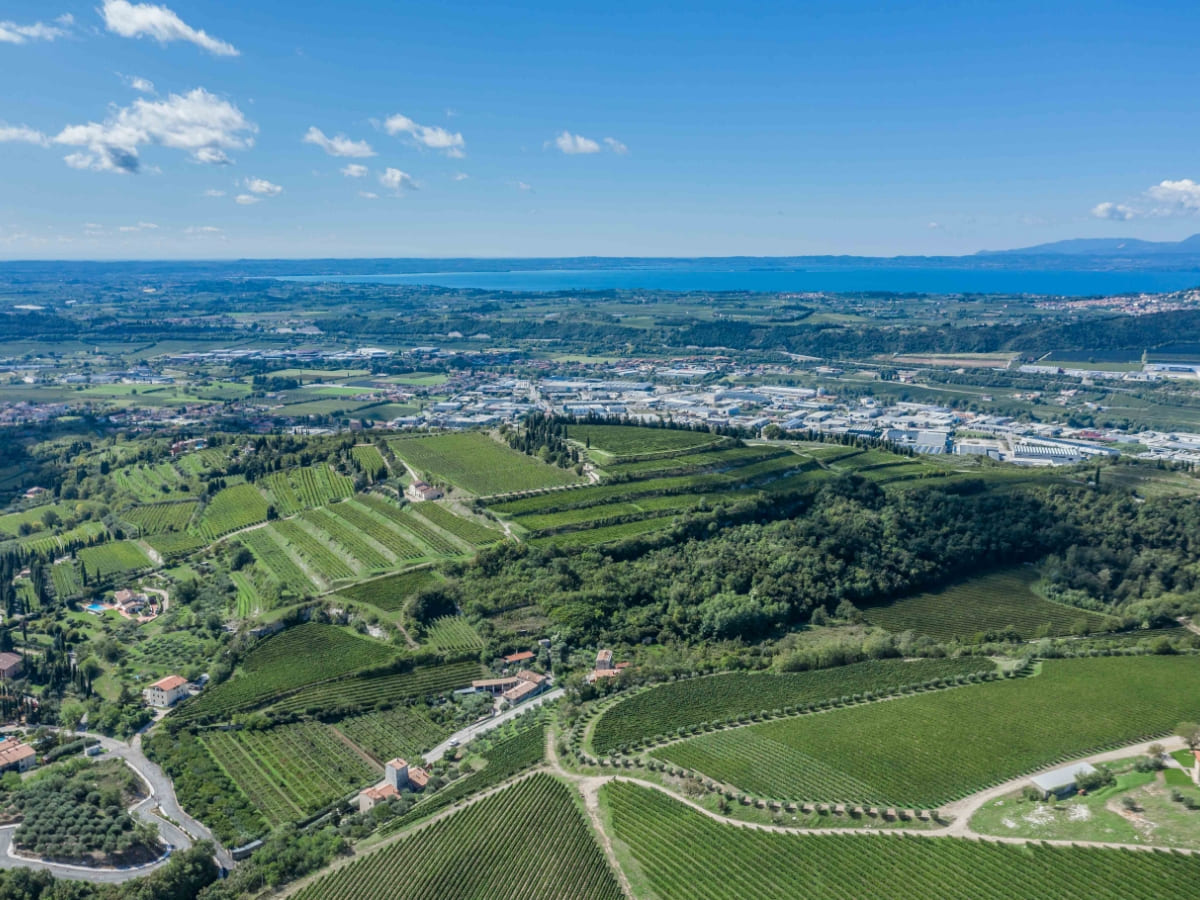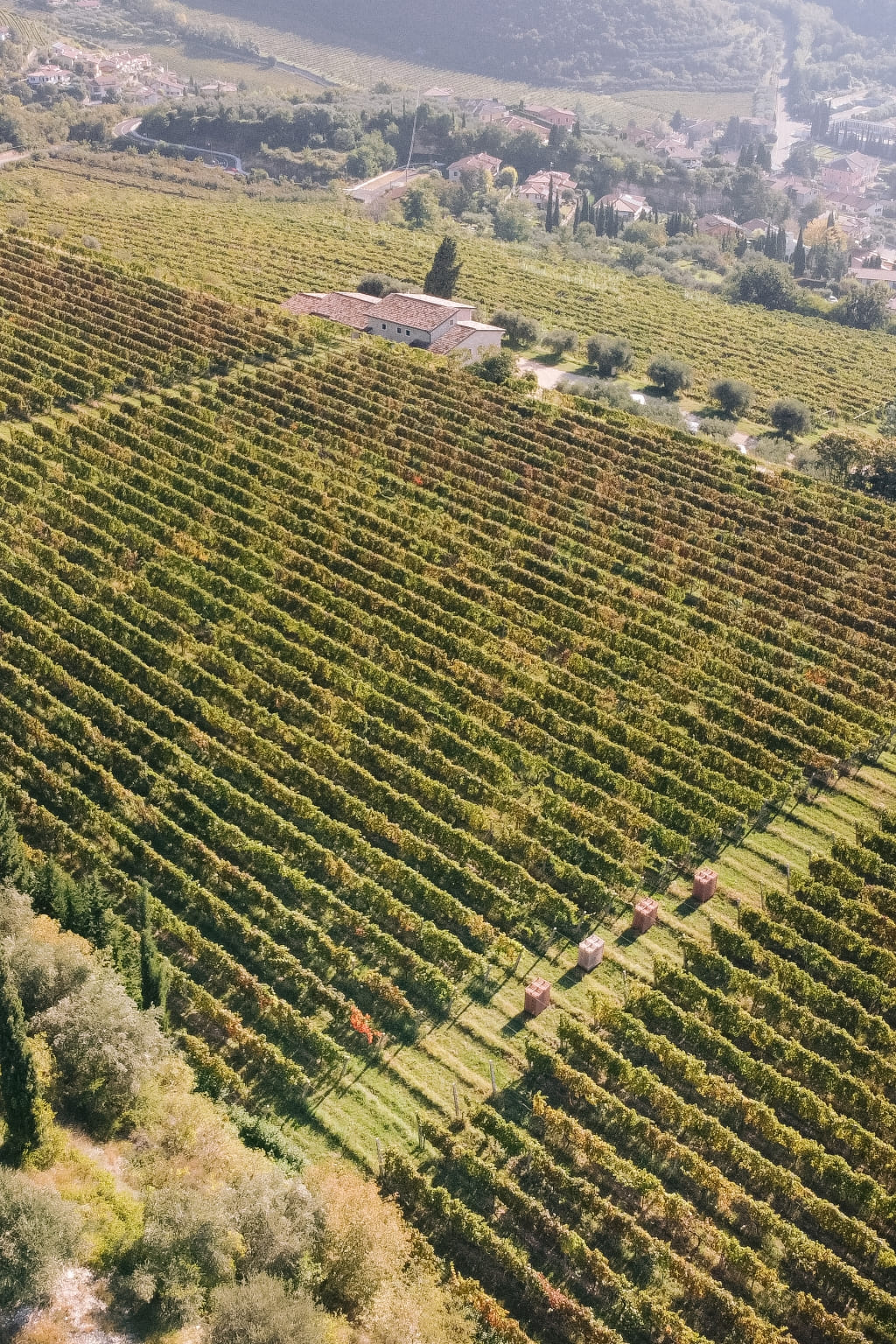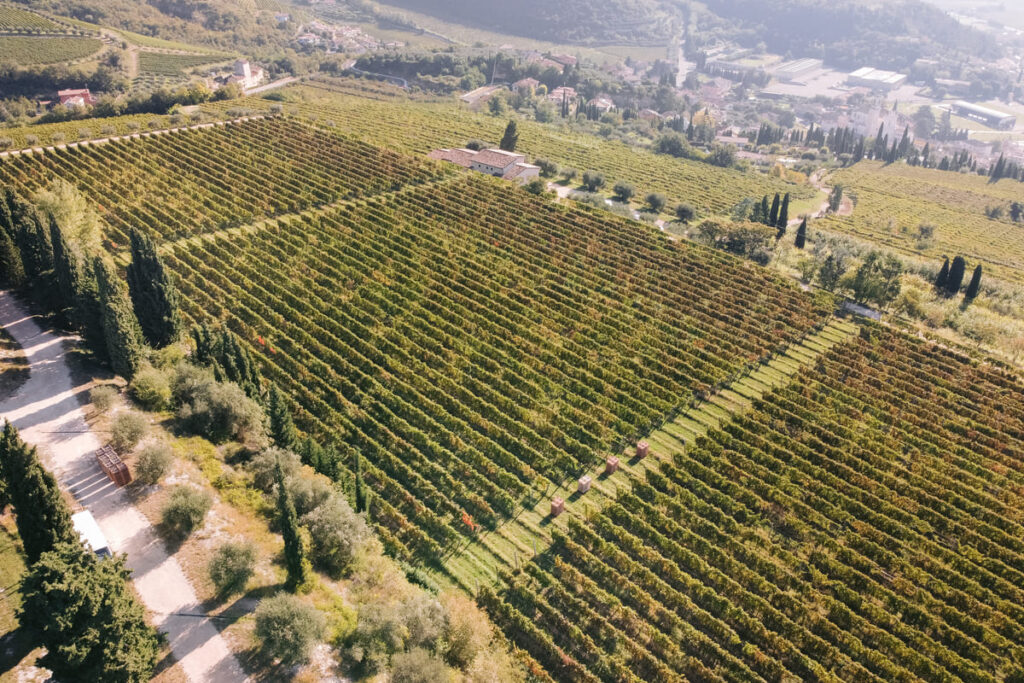The hill of La Grola is located in the municipality of Sant’Ambrogio di Valpolicella. It boasts unique geo-climatic and pedo-climatic conditions and enjoys an exceptional microclimate. Facing south-east, and therefore benefitting from excellent exposure, it is protected to the north by Monte Pastello, and enjoys the mitigating influence of nearby Lake Garda and the constant breezes coming from Monte Baldo and the Adige Valley. The altitude varies from 270 to 320 m a.s.l.

La Grola
N 45° 31’ 47”; E 10° 49’ 52”
- Area: Sant’Ambrogio di Valpolicella, Verona
- Altitude: 310 m (1017 ft) a.s.l.
- Density: 1979 planting: 4,240 vines/ha (1,715 vines/ac); 1998 planting: 6,500 vines/ha (2,630 vines/ac)
- Aspect: South-West
- Soil: Clay and limestone
- Planting date: 1979
History
In 1979, when Giovanni Allegrini bought this land after years of neglect, he realized not only his lifelong dream but also achieved the goal of contributing to the viticultural, oenological and cultural rebirth of the entire Valpolicella. Giovanni was the first in Valpolicella to introduce Guyot training, which led to an increase in vine density, up to 6,500 vines/ha. In addition to Corvina, the other indigenous varieties cultivated are Corvinone, Rondinella and Oseleta.



The soil
The soil is clayey-calcareous in composition, with very little soil and a lot of gravelly matter. Rich in potassium and calcium, low in magnesium and iron, it is a poor, unfertile soil that keeps the vine in a mild state of stress, a useful factor for the quantitative containment of yields.